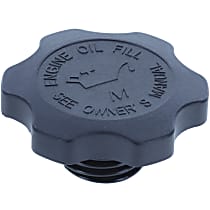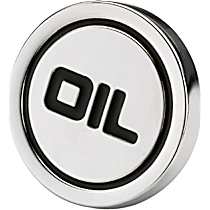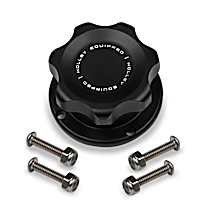{
"lazyNodes": false,
"abFitnotesFlag": false,
"abCrawlReviews": false,
"productOptionsCookie": false,
"orderDelayFlag": false,
"skipSessionCookie": false,
"covidMessage": false,
"fullTitleCookie": false,
"nrLoggerCookie": false,
"checkoutReviewCookie": false,
"productOptionSeqCookie": false,
"maintenanceFlag": false,
"bufferETACookie": false,
"multiShippingDiscountFlag": false,
"newFitmentFlag": false,
"surveyOptInFlag": false,
"crossSellFlag": false,
"skuMappingFlag": false,
"paySplitCookie": false,
"callDisableFlag": false,
"zipPaymentFlag": "u",
"hassleFreeReturn": false,
"lifetimeReplacement": false,
"cpn_off": false
}Dodge Magnum Oil Filler Caps
Shop Catalog
![]() WARNING: This product can expose you to chemical which is known to the State of California to cause cancer and birth defects or other reproductive harm. For more information go to www.P65Warnings.ca.gov.
WARNING: This product can expose you to chemical which is known to the State of California to cause cancer and birth defects or other reproductive harm. For more information go to www.P65Warnings.ca.gov.
![]() WARNING: This product can expose you to chemical which is known to the State of California to cause cancer and birth defects or other reproductive harm. For more information go to www.P65Warnings.ca.gov.
WARNING: This product can expose you to chemical which is known to the State of California to cause cancer and birth defects or other reproductive harm. For more information go to www.P65Warnings.ca.gov.
![]() WARNING: This product can expose you to chemical which is known to the State of California to cause cancer and birth defects or other reproductive harm. For more information go to www.P65Warnings.ca.gov.
WARNING: This product can expose you to chemical which is known to the State of California to cause cancer and birth defects or other reproductive harm. For more information go to www.P65Warnings.ca.gov.
![]() WARNING: This product can expose you to chemical which is known to the State of California to cause cancer and birth defects or other reproductive harm. For more information go to www.P65Warnings.ca.gov.
WARNING: This product can expose you to chemical which is known to the State of California to cause cancer and birth defects or other reproductive harm. For more information go to www.P65Warnings.ca.gov.
![]() WARNING: This product can expose you to chemical which is known to the State of California to cause cancer and birth defects or other reproductive harm. For more information go to www.P65Warnings.ca.gov.
WARNING: This product can expose you to chemical which is known to the State of California to cause cancer and birth defects or other reproductive harm. For more information go to www.P65Warnings.ca.gov.
![]() WARNING: This product can expose you to chemical which is known to the State of California to cause cancer and birth defects or other reproductive harm. For more information go to www.P65Warnings.ca.gov.
WARNING: This product can expose you to chemical which is known to the State of California to cause cancer and birth defects or other reproductive harm. For more information go to www.P65Warnings.ca.gov.
![]() WARNING: This product can expose you to chemical which is known to the State of California to cause cancer and birth defects or other reproductive harm. For more information go to www.P65Warnings.ca.gov.
WARNING: This product can expose you to chemical which is known to the State of California to cause cancer and birth defects or other reproductive harm. For more information go to www.P65Warnings.ca.gov.
![]() WARNING: This product can expose you to chemical which is known to the State of California to cause cancer and birth defects or other reproductive harm. For more information go to www.P65Warnings.ca.gov.
WARNING: This product can expose you to chemical which is known to the State of California to cause cancer and birth defects or other reproductive harm. For more information go to www.P65Warnings.ca.gov.
![]() WARNING: This product can expose you to chemical which is known to the State of California to cause cancer and birth defects or other reproductive harm. For more information go to www.P65Warnings.ca.gov.
WARNING: This product can expose you to chemical which is known to the State of California to cause cancer and birth defects or other reproductive harm. For more information go to www.P65Warnings.ca.gov.
![]() WARNING: This product can expose you to chemical which is known to the State of California to cause cancer and birth defects or other reproductive harm. For more information go to www.P65Warnings.ca.gov.
WARNING: This product can expose you to chemical which is known to the State of California to cause cancer and birth defects or other reproductive harm. For more information go to www.P65Warnings.ca.gov.
![]() WARNING: This product can expose you to chemical which is known to the State of California to cause cancer and birth defects or other reproductive harm. For more information go to www.P65Warnings.ca.gov.
WARNING: This product can expose you to chemical which is known to the State of California to cause cancer and birth defects or other reproductive harm. For more information go to www.P65Warnings.ca.gov.
![]() WARNING: This product can expose you to chemical which is known to the State of California to cause cancer and birth defects or other reproductive harm. For more information go to www.P65Warnings.ca.gov.
WARNING: This product can expose you to chemical which is known to the State of California to cause cancer and birth defects or other reproductive harm. For more information go to www.P65Warnings.ca.gov.
![]() WARNING: This product can expose you to chemical which is known to the State of California to cause cancer and birth defects or other reproductive harm. For more information go to www.P65Warnings.ca.gov.
WARNING: This product can expose you to chemical which is known to the State of California to cause cancer and birth defects or other reproductive harm. For more information go to www.P65Warnings.ca.gov.
Top Rated Products
Popular Products
Customer Guides
Pinpointing the Culprits behind Dodge Magnum Oil Filler Cap Problems
Don't underestimate the function and purpose of your Dodge Magnum oil filler cap. It may look small and simple compared to other car parts, but it offers the same amount of service. This cap covers the hole of the fuel reservoir. It keeps the oil safe and uncontaminated. When it comes off from its mounting and goes missing, you'll experience a lot of troubles. To find out what causes your oil filler cap to fail, here are the things that you need to do:
Leaks
Leak is the most common problems that car owners like you experience with their oil filler cap. Finding a leak in the system is very easy. Simply observe the opening of the oil reservoir. Feel the edges with your fingers. If they are wet with fuel, then you know that the cap is loose. To further assess the situation, open the cap and check the gasket. If the gasket looks old and torn, replace it. Installing a new gasket will help stop the leak.
White crud
Try to open your oil filler cap. Do you see a milk-like substance on the underside of the cap? If yes, then you're having a problem with your oil filler cap. This white crud is formed when coolant gets mixed up with fuel and moisture. Therefore, it only means one thing-leak in the system. You must fix this problem right away because white crud can lead to corrosion. Rust has the potential to contaminate not just the oil but the coolant as well. Begin your repair procedure by checking the condition of the gasket. Provide a new rubber seal if the current one is torn and damaged.
Missing oil filler cap
If your oil cap suddenly disappeared, you must check the locking springs right away. The locking springs keeps the cap securely attached to the reservoir despite extreme mechanical vibrations. The spring is held in place by a bolt. However, rust can destroy the bolt threads and cause the spring to come off from its mounting. When this happens, buy and install a new oil filler cap. To keep it in place, you should tighten the spring bolt every once in a while. Also, be careful when filling the reservoir with oil. Wipe off oil from the bolt to prevent it from getting loose.
Your Dodge Magnum oil filler cap is one of the smallest components in your vehicle. When it goes missing, it would be very difficult to get it back. To keep your oil filler cap tightly attached to the fuel reservoir, you need to do some very important things. These maintenance tips aim to ensure the proper functioning of the cap. Do these to prolong the service life of this essential component.
Inspect the oil filler cap for damage.
Periodic inspection of the filler cap will help you locate small cracks, dent, and fractures on the cap. This can also give you an idea about the extent of the damage and the right repair procedure that can help resolve the problem. As much as possible, do this every four months to keep track of the filler cap's condition.
Remove and install the cap gently.
When removing the cap, twist it gently to avoid damaging the threads. Rotate the cap slowly in a counter-clockwise direction until it finally comes off from the reservoir. If you're going to use a wrench, do not apply too much pressure to prevent denting.
Clean the oil filler cap regularly.
There are times when you're in a hurry that you tend to forget to clean the oil residue around the cap. You should refrain from doing that. Oil residue may initiate rust. It can also get into the threads of the spring bolt causing it to loosen up. That's why it's important to always have a rag in your toolbox, so you can wipe off oil drippings immediately.
Replace torn and old oil filler gaskets.
It's no necessary to replace your gaskets each time you remove the oil filler cap. Replace the seal only when you noticed that the current one that you're using is torn and punctured. Rubber seals and O-rings are very affordable, so there's no reason for you to avoid spending even just a little.
Apply a light coat of wax sealant.
Before installing the new gaskets, coat it with wax sealant or lubricating oil. This product has excellent anti-corrosion properties that inhibit rust. It also enhances the ability of the gasket to seal fuel inside the reservoir.
























